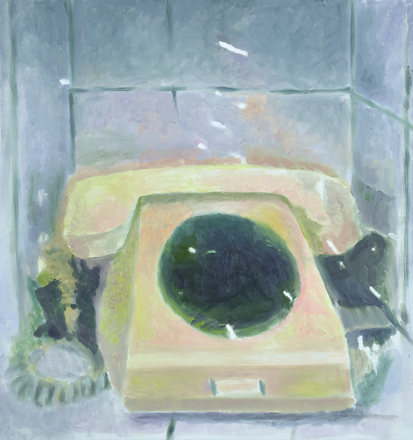Luc Tuymans
Vilnius (2024)
Luc Tuymans has changed the relationship of figurative painting to screen-based images in the way Gerhard Richter changed the medium’s engagement with analog photography. While the source of Tuymans’s visual references used to be the TV, it is now the iPhone. For the painting he chose for his second TEXTE ZUR KUNST edition, his phone captured one of its historical predecessors: an analog telephone. The painterly highlights seem to reflect this work process – the light breaking on the surface of the screen from which the image was painted – but could also allude to the location of the specific telephone portrayed here: a museum, where it may well have been displayed behind glass. The muted color palette of “Vilnius” is as characteristic for Tuymans as the connection to a historical context of which his painting seems to bear no clue. The artist saw the telephone at a history museum dedicated to the Soviet occupation of Lithuania when he prepared a show in that city. The history of the museum building itself had been marked by deadly politics, having housed the German occupiers during World War I before serving as the Gestapo’s headquarters and then those of the KGB. A few years ago, the museum faced harsh criticism for focusing on the last part of this history and the claim of a Soviet genocide of Lithuanians while remaining silent on Lithuanians’ involvement in the Holocaust, which killed 90 percent of the country’s Jewish population. Out of such a fraught context, Tuymans takes the telephone and renders it useless: in the place of the rotary dial, a deep green abyss is partially concealed with heavy black redaction-like brushstrokes.

